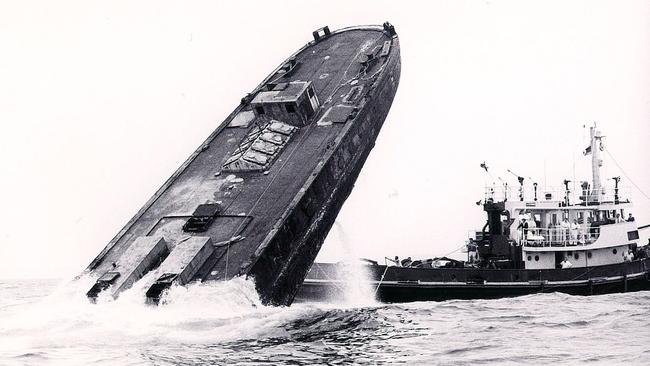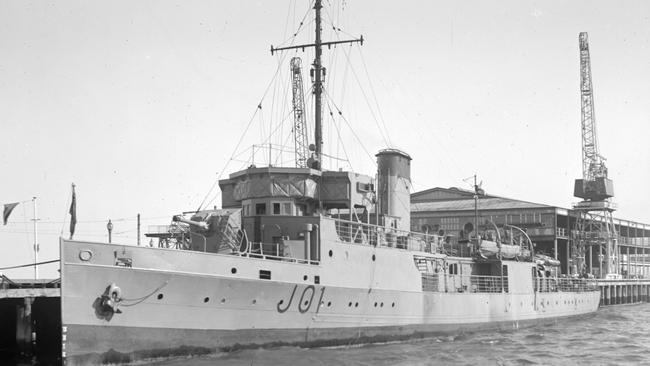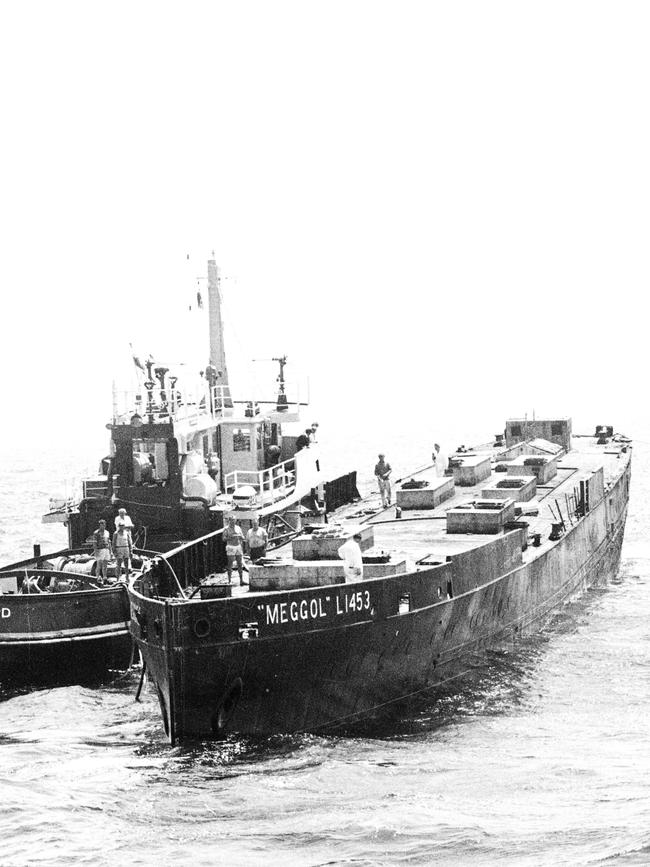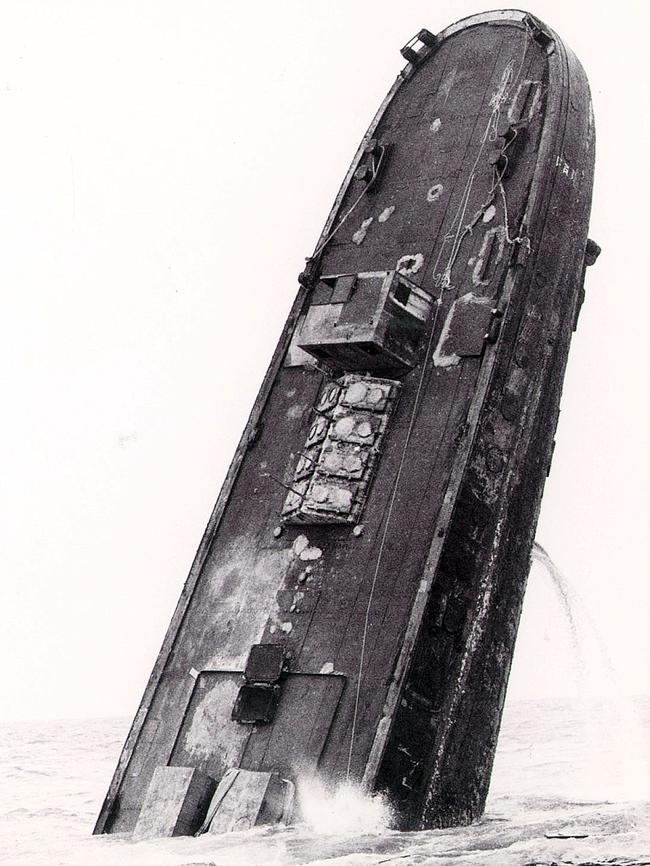The chequered history of a ship now serving as an artificial reef
One of the most dramatic photos taken by the Manly Daily at Narrabeen in the 1970s was of a former warship almost vertical in the water before plunging bow-first to the seabed below.

Manly
Don't miss out on the headlines from Manly. Followed categories will be added to My News.
- The day timber choked the harbour beaches at Manly
- Bilgola Estate surveyor’s body found after going for a swim
- Fear of sharks drove a council to have a shark net built at Dee Why
- Life on the edge for our wartime searchlight lads
One of the most dramatic photos taken by the Manly Daily at Narrabeen in the 1970s was of a former warship almost vertical in the water before plunging bow-first to the seabed below.
The vessel now lying on the seabed off Narrabeen began life as a warship, was converted to a ferry, was recommissioned as a warship, was stripped of her superstructure and used as a lowly lighter, was abandoned in a backwater of Sydney Harbour and finally became a permanent part of the northern beaches when she was scuttled off Narrabeen.

The rusting wreck lying 4km off Narrabeen was one of more than 100 Hunt-class minesweepers built in Scotland between 1916 and 1919, of which the first 20, called the Belvoir group, were designed by the Ailsa Shipbuilding Company, while the rest, called the Aberdare group, were designed by the Admiralty.
Ships of the Aberdare group were named after British foxhunts, while the ships of the Belvoir group were named after coastal towns or ports, including Wexford.
Although she was christened HMS Wexford when she was launched in 1919, the ship was almost immediately decommissioned and in 1921 was sold to the Brisbane Tug Company.
In Brisbane she was overhauled, converted to a ferry capable of carrying 1524 people and renamed Doomba.

The Doomba was one of two ferries operated by the Brisbane Tug Company on the run between Moreton Bay and Stradbroke Island.
In 1923 ownership of the Doomba was transferred to the Doomba Shipping Company, although she continued operating the Moreton Bay-Stradbroke Island run.
In 1928 the Doomba was withdrawn from full-time service but retained for use as a reserve vessel when needed.
In 1936 she was laid up and the following year her ownership was transferred back to the Brisbane Tug Company.

In September 1939 the Doomba entered the third phase of her life when she was requisitioned by the Royal Australian Navy and converted to an auxiliary minesweeper called HMAS Doomba.
She was fitted with a 4-inch gun, two 20mm Oerlikon anti-aircraft guns, four machine-guns, two depth-charge throwers and two depth-charge chutes, and was commissioned on September 25 under the command of Lieutenant Commander M.J. Clark.
In 1940 she was purchased outright by the RAN for £12,000.

HMAS Doomba performed minesweeping duties around the southeastern coast of Australia until June 1942, when heavier armament was added and her role changed to that of an anti-submarine vessel, under which classification she operated until the end of the war, although she was also used as a training vessel from 1944.
On June 12, 1942, HMAS Doomba rescued the crew of the Panamanian-registered freighter Guatemala, which had been torpedoed by the Japanese submarine I-21, the same submarine that had launched the seaplane that reconnoitred Sydney Harbour two days before the harbour was attacked by three Japanese midget submarines.
The Guatemala was under charter to the Commonwealth government at the time and was part of a convoy of eight ships en route from Newcastle to Melbourne, escorted by USS Perkins and HMAS Doomba.
After her crew had been rescued by HMAS Doomba, the Guatemala sank off Cape Three Points.

HMAS Doomba was paid off to F Reserve in March 1946, and was sold in February 1947 to ship-breakers Penguin Pty Ltd, which stripped her of her superstructure and removed her engines.
The gutted hulk was then sold to vegetable oil merchants Meggitt Ltd, renamed Meggol and was used throughout the 1950s as an oil barge, unloading vegetable oil from ships and transporting it to the Meggitt Ltd factory.
In 1970 the Meggol was sold to ship-breakers and her rusting hulk lay abandoned in Homebush Bay, a short distance from the State Brickworks.
Then, in December 1976, the Meggol was refloated and, on December 8, towed out of Sydney Harbour to her final resting place off Narrabeen.
Once in position, the tug that had towed the Meggol to her graveyard pumped thousands of gallons of seawater into the holds of the Meggol to sink her.
The scuttling, which took place under the supervision of officers of the Fisheries Department, took 2½ hours and was completed when the Meggol sank at exactly 1.12pm.
The Meggol was the second vessel scuttled off Narrabeen as part of an artificial reef that began when the Manly ferry Dee Why disappeared beneath the waves in May 1976.
